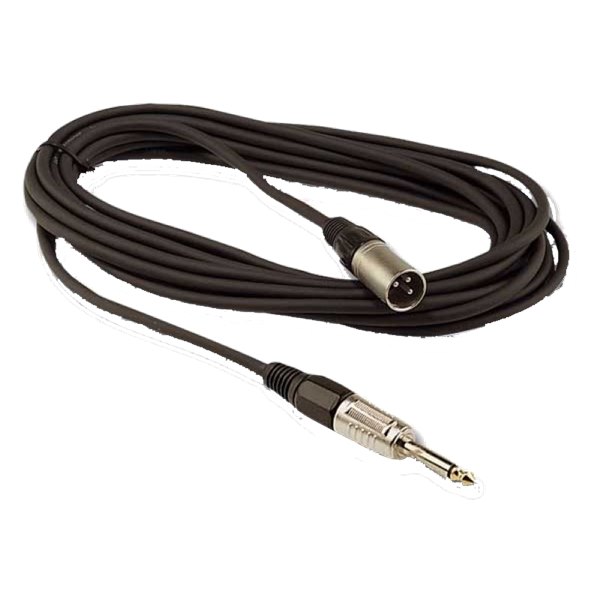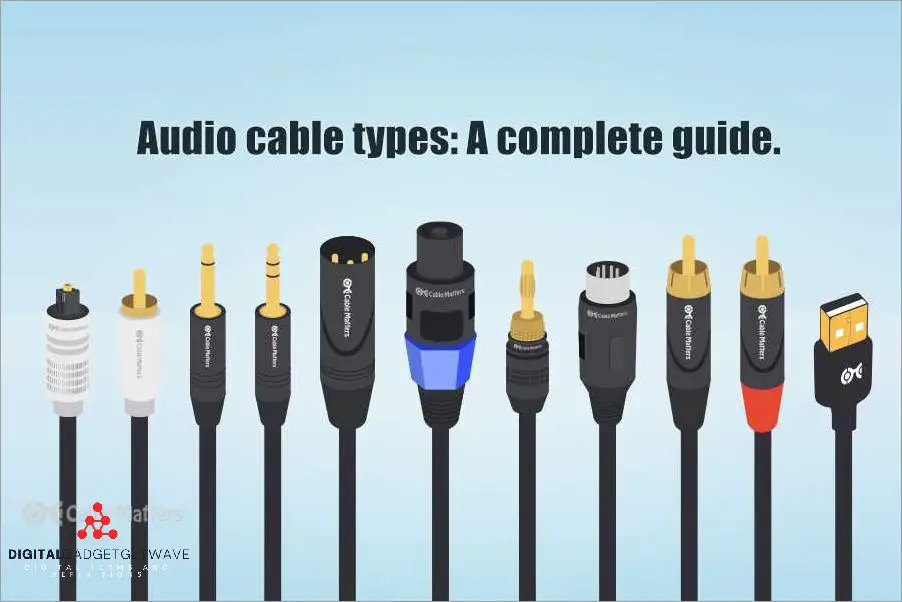Recommendation Tips About Does XLR Give Better Sound

What Is An XLR Cable? A Beginner's Guide To Audio Connections
Unlocking Audio Excellence
1. Decoding the XLR Mystery
Okay, let's cut to the chase. You're here because you've heard whispers, maybe even shouts, about XLR cables and their supposed audio magic. You're wondering, "Does XLR really give better sound?" Well, the answer, like most things in audio, isn't a simple yes or no. It's more of a "it depends...but often, yes!" Let's unpack that a bit, shall we?
Think of audio signals as delicate flowers. You want to transport them from the microphone (the garden) to your recording device or mixer (the vase) in pristine condition. That's where cables come in. Some cables are like rusty wheelbarrows, jostling those flowers around. Others are like limousines, offering a smooth and protected ride. XLR, generally speaking, is closer to the limousine end of the spectrum.
The key difference lies in something called "balanced" audio. Unbalanced connections, like those using standard 1/4" or RCA cables, are more susceptible to interference. Think of it like trying to have a quiet conversation in a crowded room. Balanced XLR connections, on the other hand, employ a clever trick to cancel out noise. They send the audio signal along two wires, with one being an inverted copy of the other. Any noise picked up along the way is the same on both wires, and when the signal reaches its destination, the noise is canceled out, leaving you with a cleaner, purer sound. Pretty neat, huh?
So, while a perfectly shielded unbalanced cable can perform admirably over short distances in a noise-free environment, XLR shines when you need longer cable runs or are dealing with potentially noisy situations. Think of a live concert stage, a busy recording studio, or even a home studio with lots of electronic gadgets buzzing around. In those scenarios, XLR's noise-canceling abilities can be a lifesaver.

כבל מסוכך 10 מטר XLRPL
The XLR Advantage
2. Why XLR Often Comes Out on Top
While the noise reduction is the headline feature, there's more to the XLR story. XLR connectors are generally built to be more robust and reliable than their unbalanced counterparts. They have a locking mechanism that prevents accidental disconnections, which is a godsend when you're in the middle of a recording session or a live performance. Imagine the horror of your microphone cable popping out mid-song! XLR helps you avoid that nightmare.
Another factor contributing to the perceived "better sound" of XLR is often related to the equipment it's connected to. Microphones that use XLR connections are typically higher-quality condensers or dynamic microphones designed for professional use. These mics, by their very nature, tend to offer superior sound compared to the basic microphones often paired with unbalanced connections. So, it's not just the cable; it's the entire signal chain.
Think of it this way: if you're using a high-end microphone and interface, chances are they'll use XLR. It becomes a sign of quality and a commitment to a clean, unadulterated audio signal. Even if the unbalanced connection could technically deliver similar sound in ideal conditions, the confidence that XLR provides, knowing you're minimizing potential noise issues, is worth its weight in gold (or at least copper!).
However, let's not get carried away. XLR won't magically transform a poor-quality microphone into a studio masterpiece. It's more about preserving the quality of the signal you already have. If you're using a cheap microphone, switching to XLR might not make a dramatic difference. The source of the sound is still the most critical factor. But if you're using a good microphone, XLR will help you capture its full potential.
When Does XLR Really Matter?
3. Situations Where XLR Is Indispensable
So, when is XLR absolutely essential? Think of situations where cable length is a factor. If you need to run a microphone cable 20 feet or more, XLR is the way to go. The longer the cable, the more susceptible it is to picking up interference. XLR's balanced design minimizes this risk, ensuring a clean signal even over longer distances.
Environments with lots of electromagnetic interference (EMI) are another prime candidate for XLR. This includes studios with lots of computers, lights, and other electronic equipment, as well as live venues with stage lighting and power cables running everywhere. These environments can generate a significant amount of noise that can be easily picked up by unbalanced cables. XLR's balanced design effectively rejects this noise, allowing you to capture a clean, professional-sounding recording.
Professional recording studios and live sound venues almost exclusively use XLR connections for microphones and other audio equipment. This is because these environments demand the highest possible audio quality and reliability. XLR provides the noise reduction, durability, and secure connections that are essential for these applications.
However, there are situations where unbalanced connections can suffice. For example, if you're using a short cable in a quiet environment with minimal electronic interference, an unbalanced connection might be perfectly adequate. A home studio with just a laptop and a simple audio interface might not benefit significantly from XLR if the cable runs are short and the environment is relatively noise-free. But when in doubt, especially if you're investing in quality equipment, XLR is always a safe bet.

What Is XLR? LEWITT
Alternatives and Considerations
4. Exploring Other Audio Connection Options
While XLR is often the preferred choice for professional audio, it's not the only option. There are other types of balanced connections available, such as TRS (Tip-Ring-Sleeve) connectors. TRS connectors can also carry balanced audio signals and are often used for headphones and line-level connections. However, XLR is generally considered to be more robust and reliable, especially for microphone connections.
It's also worth noting that some audio interfaces and mixers offer "combo" jacks that accept both XLR and 1/4" (TRS) connectors. These jacks provide flexibility and allow you to use either type of connection, depending on your needs. This can be particularly useful if you have a mix of XLR and unbalanced equipment.
Finally, consider the cost of XLR cables and equipment. XLR cables tend to be slightly more expensive than unbalanced cables. And audio interfaces and mixers with XLR inputs and outputs can also be more expensive than their unbalanced counterparts. However, the increased cost is often justified by the improved audio quality and reliability that XLR provides.
Ultimately, the best audio connection for you will depend on your specific needs and budget. If you're serious about audio quality and reliability, XLR is generally the way to go. But if you're on a tight budget and only need to record in a quiet environment with short cable runs, unbalanced connections might be sufficient.

What Are XLR Cables A Complete Guide To For Audio
Making the Right Choice for Your Sound
5. Weighing the Pros and Cons of XLR
So, to circle back to our original question: "Does XLR give better sound?" The answer, as we've seen, is nuanced. It's not a magic bullet that instantly transforms your audio into a masterpiece. But in many situations, particularly those involving long cable runs, noisy environments, or professional-grade equipment, XLR offers a significant advantage. Its noise-canceling abilities, robust construction, and secure connections make it the preferred choice for many audio professionals and enthusiasts.
Think of it as an investment in the quality and reliability of your audio. If you're serious about capturing the best possible sound, XLR is a worthwhile investment. It can help you minimize noise, ensure a stable connection, and unlock the full potential of your microphones and other audio equipment.
However, it's also important to consider your specific needs and budget. If you're a casual hobbyist recording in a quiet environment with basic equipment, unbalanced connections might be sufficient. But if you're planning to upgrade your equipment or record in more challenging environments, XLR is definitely worth considering.
In the end, the best way to determine if XLR is right for you is to experiment and listen for yourself. Try recording the same audio source with both XLR and unbalanced connections (if your equipment allows) and compare the results. Pay attention to the noise floor, clarity, and overall sound quality. This will help you make an informed decision based on your own ears and your own specific needs.

Frequently Asked Questions (FAQs)
6. Answering Your Burning XLR Questions
Q: Can I use an XLR to 1/4" adapter?
A: Yes, you can! But be aware that you'll lose the benefits of the balanced XLR connection. The signal becomes unbalanced at the adapter. It's okay for short runs in low-noise environments, but not ideal for longer distances or situations with potential interference.
Q: Does XLR require phantom power?
A: XLR itself doesn't require phantom power. However, condenser microphones do require phantom power (typically 48V), which is usually supplied through the XLR connection from your audio interface or mixer. Dynamic microphones (like the Shure SM58) don't need phantom power.
Q: Is there a noticeable difference between cheap and expensive XLR cables?
A: Yes, but up to a point. A well-shielded, durable cable from a reputable brand is generally sufficient. Super-expensive "audiophile" cables might offer marginal improvements, but the difference is often negligible compared to the impact of your microphone, recording environment, and mixing skills. Focus on getting a solid, reliable cable rather than chasing diminishing returns.
